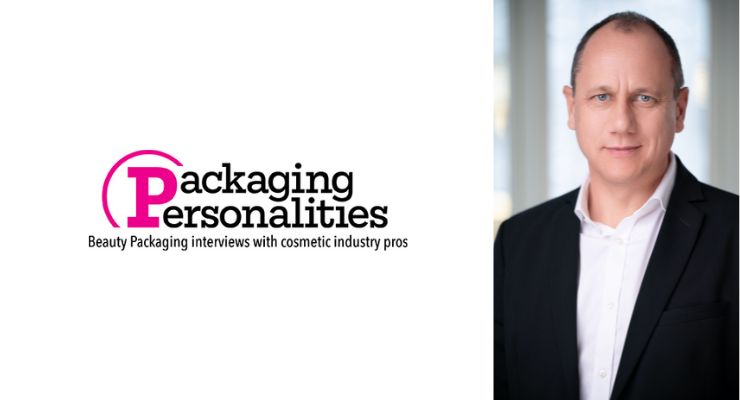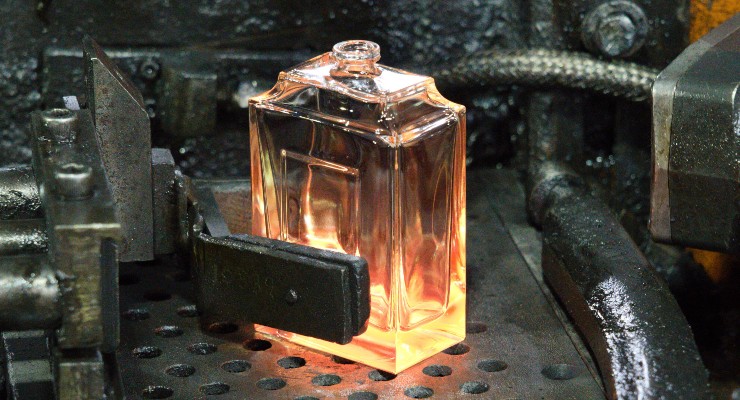Jamie Matusow: Can you please provide a brief history of Verescence?
Michel Levisse: Verescence is the world leader in glass packaging for the Perfumery & Cosmetics Industry. Our first glass manufacturing plant was created in 1896 in France, and for over 120 years, Verescence has been supplying the largest beauty brands with its extensive expertise. At the cutting edge of technology, Verescence offers worldwide industry coverage in 4 countries. In the U.S., we have two state- of-the-art glass and decoration production facilities located in Atlanta, GA.
JM: What is your specialty?
ML: Verescence is passionate about the beauty business, and has a unique glass and decoration know-how with unmatched industrial capacity and capability on the market. We continually push the limits in order to provide high-quality, innovative and eco-friendly glass packaging solutions for international and local brands.
As the No. 1 glassmaker for luxury and premium fragrance, our full decoration capacities include silk-screening, lacquering, hot stamping, pad-printing, gluing, labeling, acid-etching and also unique patented technologies such as METAL’in & COLOR’in (inside silver or color coating compatible with fragrance) and, safety glass (coating to increase the strength of the glass).
JM: What makes Verescence stand out from other suppliers as far as categories and services?
ML: Our global footprint and our corporate social responsibility (CSR). We have a unique global footprint with manufacturing facilities in the U.S., Europe and Asia, close to our customers for a short and local supply chain.
CSR is at the core of our DNA. Our strategy is based on three pillars: people first, act for society, eco solutions. We are proud to say that 100% of our sites are ISO 14001-certified (the international standard that specifies requirements for an effective environmental management system) and that Verescence has been awarded the Ecovadis platinum medal—making the group and all our manufacturing sites in the top 1% of the most advanced companies in CSR among the 90,000 companies assessed by Ecovadis in the world, all sectors combined.
JM: How has your company evolved over the past few years regarding your services and offerings?
ML: Verescence offers customers sustainability-focused R&D strategies in the following areas:
- Reduce: Light weight glass packaging has a considerable impact on C02 emissions. We are reducing weight from 20% to 60%.
- Reuse: We have developed reusable solutions—such as a refillable jar with a glass cup—and we also offer screw-neck bottles allowing “refillability” and “separability” of the pack in order to facilitate recycling.
- Recycle: Our Verre Infini (Infinite Glass) with 20% post-consumer recycled glass reduces the use of raw materials, minimizes CO2 emissions by 5% and saves energy in the manufacturing process. Our PCR is sourced locally in recycling facilities in the countries where our factories are located. In the U.S., we developed a partnership with Strategic Material, the leader in glass recycling to supply our PCR.
- Replace: Glass packaging is the most sustainable material, made with natural ingredients, inert—no content interaction—infinitely recyclable, perceived as luxurious and eco-responsible. There is a “glassification” trend—switching from plastic to glass especially in skincare, but also in new territories such as lip gloss and mascara.
JM: Is the company now more involved in full service/turnkey?
ML: At Verescence, we are committed to support our key clients through co-developing innovative and sustainable glass packaging solutions. We have built several strong technical partnerships with key packaging suppliers, facilitating technical validation on key projects.
We have co-developed several projects with companies manufacturing in the U.S., and have a very good success story with REN on their new clean skincare jar. Verescence & Anomatic teamed up to develop more sustainable packaging and ensured the technical fit between the glass jar and aluminum caps.
JM: Any product or collection you are most proud of?
ML: At Verescence North America, we have a wide range of well-designed standard bottles and jars made in the U.S., including the Penelope, Cléopâtre and Tango lines. We provide quick local packaging solutions to indie or international brands. For example, for IT Cosmetics & Kiehl’s we provided our light weight Tango bottles. For YTTP, we fast-tracked a launch in less than 8 weeks with our Cléopâtre jar.
We are implementing our new 20% PCR composition to all our standard bottles and jars; we started early this year with our plants in Europe, and by the end of 2022, we will have our new 20% PCR glass composition in place for the U.S. It’s a project eagerly awaited by our U.S. customers!
JM: Briefly describe a recent innovative or challenging product that you produced—and how it reflects your expertise.
ML: In Skincare, we launched Clinique’s new Smart Clinical Repair Eye Cream, part of the glassification trend of switching plastic to glass. It’s a 15ml eye serum with a pure press 15ml jar, lacquering, hot-stamping, and silkscreen, 100% made in the USA.
In Fragrance, we launched Oui Juicy Couture Play—four new fragrances for women. Challenges included how to develop a deep push-up and have a perfect fit with top and bottom plate in order to stack one bottle on top of the other one. As a whole, it is a very beautiful and playful packaging—and very successful.
JM: What’s next for Verescence?
ML: Verescence has strong CSR commitments, and we are working hard to become climate neutral by 2050, which means that our operations' carbon emissions are our top priority. We have already reduced our CO2 emissions by 14% between 2016 and 2021, and we have launched a plan to achieve 40% reduction in emissions by 2034 from a 2019 base year. This roadmap was recently validated by The Science Based Targets initiative (SBTi), with confirmation that our objective is in line with the “well-below 2°C” trajectory. Main projects are electrification of our furnaces, and we are accelerating this energy transition by already switching one furnace in 2025. Increasing the use of PCR content in our glass formula is another project as well as recovering the residuary heat from our furnaces to heat our buildings. Our decarbonization journey is well underway in our operations, and the next step is to address emissions in our supply chain.














